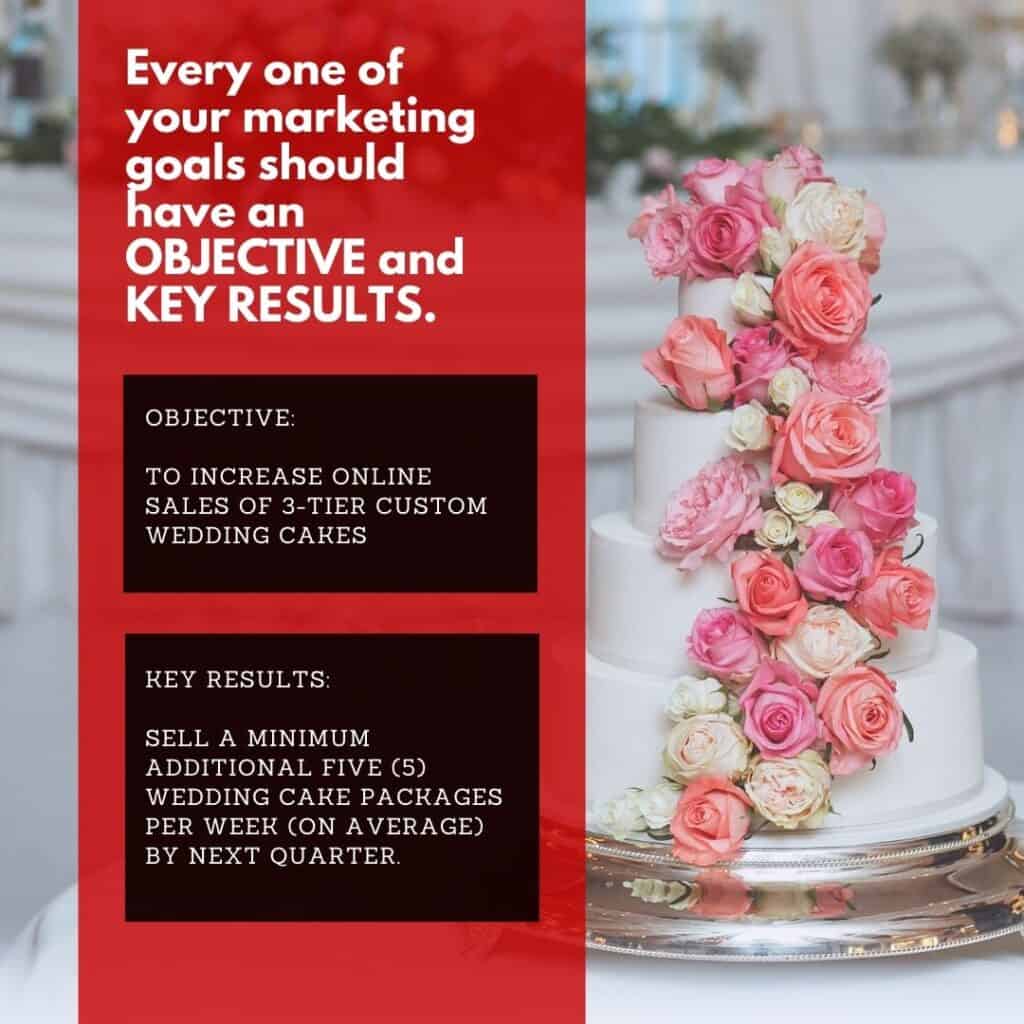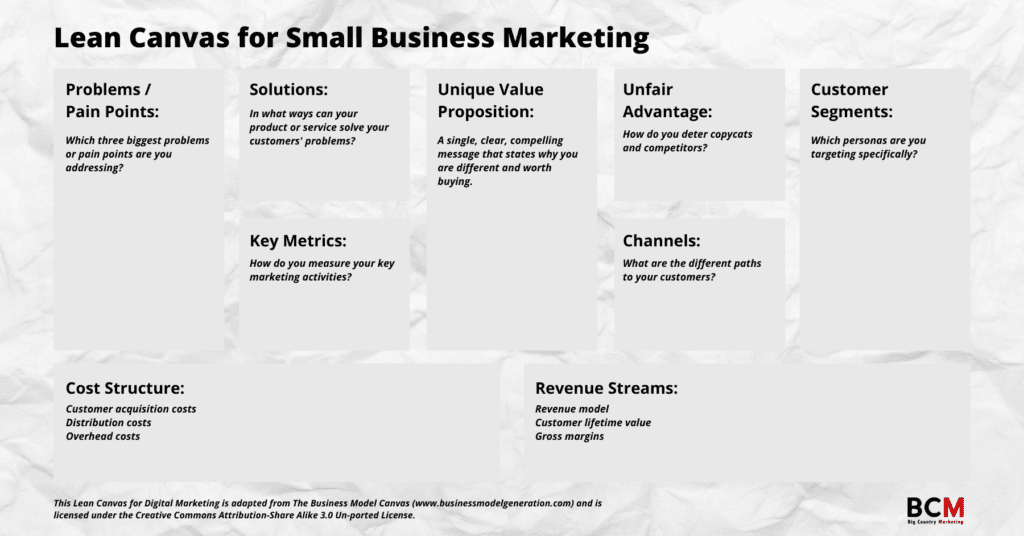How Do I Get Started With Successful Digital Marketing?
Digital marketing can be overwhelming, especially if you’re a busy business owner with a lot on your plate already. We’ve prepared a step-by-step guide to help get you started with your digital marketing the right way.

For many small business owners and marketing professionals, having a step-by-step action plan when it comes to getting started with digital marketing certainly helps.
Face it: there are just so many marketing channels to choose from. And so understandably, it can be overwhelming to know where to start and what to do exactly. With digital marketing alone, between email, SEO, online ads, and social media, it can already be too much for a busy business owner.
Implementing an easy-to-follow digital marketing system makes life a whole lot easier for busy business owners. Sure, there are all sorts of online marketing gurus out there peddling their own systems. But what we’ll talk about is a basic guide for your own small business endeavor’s digital marketing efforts.
Let’s get started.
1. Review your brand
When you’re going to do any marketing (yes, that includes digital marketing), you will want to start with a really clear foundation. And this is where a quick brand review comes in.
By giving your brand a quick review, you can:
- Understand what it is you’re selling, what makes it unique, and what’s your value proposition
- Identify your target market: who exactly is it you’re selling to.
- Get to know your target market even more: who they are, what motivates them, and how your product or service solves their problem.
- Scope out your competition, the market share, the opportunity within that market, and most importantly, how you stack up.
2. Define your value proposition
Right at the core of your marketing efforts is your value proposition.
What is a value proposition? A value proposition is a short, distinct statement that outlines exactly why a customer should buy your product or service.
- It should be something that can live as a headline with a supporting sentence or a few bullet points.
- It should be front and center in your messaging
- It is the foundation upon which all your marketing efforts will be built upon.
- It must be simple, clear, and easy to understand in about five seconds.
- It is not a jargon-filled statement, nor is it your slogan.
Take note: the less known your brand is, the better the value proposition you’re going to need. You’ll need to go beyond merely listing all of your key differentiators.
Instead, consider selling the result of the experience of interacting with your brand and not just what features you get as a result. This way, not only are you telling a story and focusing on the outcomes, but you’re also attacking the pain points of any other existing solutions.
So as you sit down to develop your value proposition, determine not how your product will be better than the others in the market, but how your outcome is better.
Then write this value proposition down, make sure it’s distributed to everyone in the company, and reflect on it every time you produce any new digital marketing collateral.

3. Zero in on your target market
One of the most important things to remember when starting a business: you can’t market to everyone.
As a small business, you don’t have a huge marketing budget or dollars to spend on ads. Nor do you have infinite time or energy.
Instead, you would want to have focused customer segments. This way, you save time, money, and effort because your digital marketing can be more effective.
So go ahead and take your broad target market and break it down into smaller groups of people that have a lot in common. This is how you start defining your ideal customer. Take the broad market and divide it into segments organized by multiple attributes. These attributes can combine demographics, psychographics, behaviors, and needs.
- Demographics factor in age, gender, marital status, income, and education level and this is your broadest targeting (e.g. 24-to-45-year olds who make less than $50000 annually and are single).
- Psychographics classify a group of people according to opinions, beliefs, values, attitudes, and interests (e.g. young adults who value environmentally conscious companies and like reading books).
- Behavior attributes may describe customers based on an action they take and how frequently they take that action (e.g. people who buy a cup of coffee every day or those who watch at least three YouTube videos per week).
- Needs-based segmentation divides the market into customer segments that each have distinct needs (e.g. folks who buy remote cameras may want to monitor a child’s activity in a room, or for those with vacation properties, have an additional layer of security on-premises).
Once you have your segments, you’ll be able to build campaigns that speak directly to that customer. To succeed at marketing, you must have specific segments. You can always add more as you find success.
Remember: for any business, success hinges on having customers. Now, in order to have customers, you need to find them. And in order to find them, you have to message them. And in order to message them, well, you have to know who they are in the first place.
4. Develop your buyer personas
Marketing is all about getting the right message in front of the right people. Your customer segments are who you’d like to get your message to. But to figure out how to send the right message, you need to truly understand your customer segments.
And that’s where buyer personas come in.
A buyer persona is a fictitious person that you describe that represents your target group really well. Every customer segment you create needs to have a buyer persona attached to it, and this buyer persona should fit on a single page and provide a snapshot of the customer that’s quick to digest.
To create a persona, use these questions as a guide:
- Who are they?
- What are their demographics, psychographics, behaviors, and their interests?
- What needs do they have?
- What barriers do they need to overcome?
- And what motivates them?
Let’s build one together.

Imagine you’re marketing for a company in the destination wedding city of Tagaytay in the Philippines that sells custom-made wedding cakes. Here’s how you might answer these questions.
One of your ideal customers might be a woman– a soon-to-wed bride– between 28 and 35 years old, who works full-time outside of the Philippines, and has an interest in country living, staying fit and healthy, and connecting with other brides-to-be.
Her needs are to save up for a farm home in the Philippine countryside, increase her free time, and continue to advance in her career. She also wants to get outdoors more.
Now she faces some obstacles, a lack of time, which often makes it harder to plan her wedding, a limited window of opportunity to actually be in the Philippines to take care of her wedding preparations, and anxiety around which wedding vendors would be dependable enough for her own tastes.
She is motivated by advice from other brides-to-be in her peer group, validation from certification organizations, easy and quick shopping experiences, and companies that align with her values.
Once you complete this exercise, you want to make this fictitious person feel real. So go ahead and add a picture and a name. (In our example, we named our target persona “Cherry”.)
Can you have more than one buyer persona? Absolutely.
A different product, service, or promotion might be designed to target a specific market segment, and would, therefore, might require a different buyer persona.
Creating a target persona or a buyer persona makes it easier to imagine the person that you’re marketing to. You’ll find creating marketing campaigns and crafting messaging is much more enjoyable and easier when you have a persona. It’s a powerful exercise that you can do even with limited time and resources.
5. Set your SMART marketing goals (using the OKR framework)
One of the most common mistakes in small business marketing is not setting goals. You can’t just start marching forward. You need a plan– a vision of what you need your marketing to accomplish, and how exactly you’re getting there.
Now, a common approach is to align your goals with an acronym called SMART. And this means that for a goal to be effective, it must be specific, measurable, attainable, relevant, and time-bound.
An additional approach encouraged by entrepreneur, startup advisor, and marketing expert, Brad Batesole, is to map out goals using OKRs: objectives and key results.
- First, you set the objective. Objectives answer the question, “where do we want to go?”
- Next, set two or three key results. Key results answer the question, “how do we know that we’ve gotten there?”
Setting goals with OKRs help you figure out if you’ve achieved your goal or not. The objective component sets you down on your path, while the key results define whether the objective was met.

Let’s say we want to increase online sales for our wedding cake shop. Here’s how we’d set SMART goals inside the OKR framework.
Let’s start by setting our objective, and it’ll be specific: “increase online sales for 3-tier custom wedding cakes“.
Next, we’ll set our key results, and these are measurable, relevant to the goal, and attainable. For this example, let’s say “sell 10 new wedding cake packages” or “15 new birthday party packages“.
Now, all goals should be time-bound. Traditionally, OKRs are time-bound by a quarter. So we might say this objective is due by end of Q1 of next year.
As you can see, the key results are how we’re qualifying that we’ve increased sales. We’ve decided that if we achieve each of those key results, well, then we’ve hit our goal.
Remember, it’s not enough to just set goals. Just as important is measuring your progress.
6. Take note of your milestones (via KPIs)
As you move your marketing forward, you may have established objectives and key results for your quarterly performance, but you’ll want to establish granular success metrics for each of your small business marketing objectives.
How do you keep track of your objectives then? A nimble and common approach for this is through the creation of key performance indicators, or KPIs. KPIs let you measure the performance of a particular marketing activity such as an outbound email campaign or a fall sales event.
By monitoring your KPIs, you’ll see what’s working, what’s not, and what is impacting something else.
Here are a few things to keep in mind when determining your KPIs:
- Make sure your KPIs are aligned with your business goals. They need to be measurable and easy to understand. So a good KPI might be “increase traffic 5% month over month”, whereas a bad KPI would be “increase traffic each month”.
- Make sure your KPIs are tied to a measurable goal. If you don’t have a quantifiable goal, it’s not easy to interpret the results. Sure, you might be satisfied with growing traffic but if you’re only growing by a few visits per month, you’ve got a problem. And that problem wouldn’t be visible if your KPI got the checkmark because it was simply to increase traffic.
- You want your KPIs to be tied to your marketing objectives because then they’re influenced by your effort. They’ll let you know when to celebrate and when to make something better.
- For online sales, look at your conversion rate and the cost per acquisition or action.
- For broader marketing objectives, set a KPI for total revenue and even the ratio of new to returning visitors.
- If you’re using a landing page, set a bounce rate KPI. This way, you can identify if your inbound traffic isn’t targeted enough, or if the content isn’t relevant enough.
As you consider your KPIs, do yourself a favor and avoid worrying about things that aren’t impacting your bottom line. For example, page views or social media follower count might be impressive but only if these aren’t actually driving revenue for you, then it’s not that important to you as a growing business.
Take your time and pick the metrics that are relevant to you and then organize them in a way that makes sense for your business. You can track your business and marketing KPIs with a Google spreadsheet, but you can also look at software from geckoboard.com or cyfe.com to build out really meaningful KPI dashboards.

7. Choose your digital marketing channels
Marketing channels are how you distribute your message. And your goal, especially in small business marketing, is to identify which marketing channels should belong on your list and which ones you just can’t accommodate.
There are countless ways to skin the proverbial cat, and there are countless ways to sell a product online. The good thing about this is that you do not need to limit yourself to just one marketing method. As long as the methods work to bring in sales, then you can mix and match to your heart’s content.
Here’s a quick run-down of the digital marketing tools at your disposal:
- A business website – Every small business owner should have a professional website. Whether you create a complete website complete with a blog and downloadable resources for visitors or a simple landing page to sell a product, your website will serve as your online office 24/7. Make it pretty and effective and it will get the job done for you.
- Search engine optimization (SEO) – You want your business to be found online, and this is where SEO comes in. Search engines (like Google, Yahoo! and Bing) all have these unique methods of ‘ranking’ websites based on the quality of content and relevance to a a particular topic. You can either study up on SEO or hire a specialist to do the optimizing for you.
- Paid channels – Organic reach just isn’t what it used to be. So if you want to reach more people you’ll need to pay for the opportunity. Paid channels include a variety of online advertising options both on search and on social, as well as mobile app marketing, display ads, boosted posts, and video advertising.
- Email marketing – This is an oldie-but-goodie as far as digital marketing tools go but is still as relevant today as it was before. Getting people to willingly sign up to an opt-in program (such as a high-value newsletter) will allow you to build a list of interested potential customers. You can then use this list to inform potential customers about the latest promotions you have to offer, brand updates, or new products and services.
- Content marketing – A brand name is something you absolutely need to build online, and having a body of helpful, high-quality, market-relevant content will do just that for you. Writing a whole host of articles on a particular topic will allow you to establish yourself as an expert on a particular field; making it easier for people to trust you and be willing to pay for your products. You’re not just limited to blog articles; ebooks, brochures, origins research, industry reports, podcasts, and video all fall within content marketing. All your awesome content can also be used for search engine optimization, so that’s killing two birds with one stone.
- Social media marketing – Social media marketing has the ability to bring a new kind of exposure and interaction to your business. It creates the opportunity to hear from your customers, gives you an additional outlet to establish credibility, and allow for real conversations with your consumers and your industry. Key to social media marketing is knowing which social networks your market spends the most time in. So while Facebook and Twitter might be the most popular social networks, but depending on your target audience, they could also be engaging a lot on platforms like LinkedIn, Pinterest, Instagram, and Tiktok, among so many others.
- Video marketing – These days, video marketing is almost a must with any digital marketing effort. This involves producing prerecorded or even live video content and distributing it through platforms like YouTube, LinkedIn, Twitter, and your website. Video marketing can be used to show off your location, your products, or even help customers through their buying decision. You might make a video to tell your brand story, to chronicle the work you’re doing, share quick updates, discuss your industry, showcase your product, or to educate and inspire.
- Influencer marketing – Influencer marketing might not be important early on in your small business marketing efforts, but it’s certainy nice to have especially as you grow. Influencers attract attention because they’re contributing authentically to a community of like-minded individuals. It used to be that a celebrity endorsement would be the Holy Grail, but now leveraging an influencer who speaks to a loyal base of followers is the real prize. Finding a way to interact and engage with influencers should be part of any comprehensive marketing strategy.
- Chatbots – Chatbots have seen tremendous rise over the last few years, becoming a lot more commonplace in marketing. A chatbot is really just a computer program that automates certain tasks, and usually you see them pop up in the bottom of a website or built into a Facebook page offering up automated responses to common questions. Chatbots eliminate the need for cluttered conversations and bots often get answers to common questions, or get to direct consumers to a real human who can then carry the conversation forward. They also get a lot of the lead generation aspects out of the way, able to slowly collect your name, email, and phone number as you navigate that interaction. This way, not only can you direct the customer to the right agent, but you’re also building your lead list.
So to decide which channels are worth your time, start by asking yourself this question: What do you want your marketing effort to accomplish?
- If you want to develop brand awareness, well use mass media channels.
- If you want a specific action to happen with a targeted set of prospective customers, well go with the personalized approach.
- If you’re just getting started with marketing, I’m going to encourage you to invest in personalized marketing first.
After you identify what you want to accomplish, ask yourself where does your target market turn for information? From here, identify what information you need to convey and how quickly you need to convey it.

8. Draw up your one-page digital marketing plan
As your marketing strategy shapes up, you’ll need a place to park all that information. It needs to be agile, easy to update, and very simple to distribute.
This is where your one-page digital marketing plan comes in.
A format used these days by many forward-thinking companies and small businesses is called the Lean Canvas. The Lean Canvas serves as a visual guide and also helps as you consider what marketing efforts you want to deploy.
The Lean Canvas is a one-page document that was adapted from Alexander Osterwalder’s “Business Model Canvas” by Ash Maurya.
Your one-page digital marketing plan is great for taking all of your marketing knowledge and research and organizing it into one central document.
Here’s what it looks like:

You have a series of boxes that you’ll need to fill out with the corresponding information. If you were to fold this paper in half where the left side is all about your product or service and the right side is all about the market. Let’s walk through these fields together.
- In the problem box, list one to three high-priority problems that your customer has. And below them, list any existing solutions that try to solve those problems.
- In the customer segments box, list the personas that you’re targeting. Now, the problem and customer segments are intrinsically connected.
- From here, the solutions box is where you’ll list one to three ways that your product or service solves the consumer’s problems.
- Now, from here, you’ll fill out your unique value proposition. And this is right in the middle, as it lives both between your product or service and your market.
- Next, list all of your channels. This is your path to the customer, and it’s how you’ll communicate the existence of what you’re selling. Pick the channels that your customer segments are spending the most time with.
- Now, moving on, you’ll need to outline your revenue streams. How are you going to make money? What’s the lifetime value of your customer? What’s the gross margin on whatever it is you’re selling?
- Now, just to the left is your cost structure. And this is where you’ll list the operational costs for making the business get all the way to market. How much will it cost to acquire your customer? How much does it cost to run the business? How much are you going to be spending on marketing?
- Next up is key metrics. Every business must have key metrics that are used to monitor performance. List what activities you’ll measure that are going to demonstrate that you’re successful in your marketing efforts.
- And finally, the unfair advantage. The job of your value proposition is to grab your customer’s attention. Well, an unfair advantage’s goal is to deter copycats and competitors. It must be something that cannot be easily replicated or purchased.
Spend 20 minutes or so filling out a Lean Canvas as your one-page digital marketing plan. And if you’re looking to do this online, you can check out miro.com, or just Google Lean Canvas templates and you’ll find plenty of resources. And as with everything, once you put your canvas together, start to test it. keep evolving it until you find the model that works for your product or service.
This Lean Canvas for Digital Marketing is adapted from The Business Model Canvas (www.businessmodelgeneration.com) and is licensed under the Creative Commons Attribution-Share Alike 3.0 Un-ported License.
9. Have a regular digital marketing routine
Now you’ll want to have a marketing system in place. A marketing system is a set of processes that you use to market your products or services.
Your goal is twofold: to attract new customers to your business AND to strengthen relationships with existing customers.
Your marketing system, therefore, is your daily, weekly, and/or monthly routine that works for your business and helps you maximize your time and impact in the process.
First things first: you gotta have a bank of content. Leverage on what you like doing or what you do well. Some business owners like taking pictures. Others love taking short video clips. And others are awesome at pumping out helpful articles. In any case, you gotta have a bank of content you can draw from. And as you use content (by publishing it online), replenish your content bank periodically.
Next: create a content calendar. A content calendar helps you organize your marketing efforts, even bring in an overarching theme, a rotation of content types, and keep track of special occasions. So your content calendar each month can have:
- Social media: you can create (or curate) enough content for three posts per week (or five or even seven).
- Blog post: you might want to have a fresh blog post each week.
- Email newsletter: you might choose to send out a newsletter to your audience once a month.
- Other monthly activities: some social media pages might need a bit of visiting just once a month. And the same can be said with certain SEO activities.
Finally: dedicate an hour or two each day to do a little bit of digital marketing. That’s five to ten hours a week, and you can accomplish a lot in that time. A typical mix can be:
- Creating an article, a video, or a bunch of photos.
- Posting some helpful, insightful, inspirational, or entertaining stuff on social media.
- Optimizing a social media page a little further.
- Monitoring your analytics on your website, your email platform, your social media posts, or your online ads.
- Doing a bit of outreach.
- Respond to your reviews.
The two most important things to remember: be consistent and be authentic.

10. Analyze your marketing activity
Once you implement your methods of choice for marketing a product, you will then have to take a long, hard look at which ones work and which ones don’t.
This basically means you will have to evaluate the effectiveness of your marketing methods. You have to check if each one meets your marketing goals and lives up to your expectations. The problem here, though, is that you need to know how a method failed or succeeded. Failure to do this will result in adopting or rejecting a marketing method without finding out why in the first place.
In order to objectively evaluate a marketing method, you first have to rate it based on three criteria:
- Sales. This is the single most obvious criterion for evaluating a marketing method’s effectiveness. It is relatively easy to keep track of the number of sales made within a period of time, and comparing this month’s profits to last month’s profits is a relatively simple task.
- Satisfaction. Happy customers make for good advertising, while unhappy customers can make your life much more difficult. It is always important that you get the feedback of your customers, especially since your success as a marketer hinges on your ability to meet the needs and wants of your customers to their satisfaction.
- Sustainability. What works today won’t work tomorrow, which is why you always, always have to keep track of how well your methods bring customers into your fold. The same digital marketing methods can only work for so long, so keep checking back on how they perform and modify them as needed.
A Final Word on Getting Started with Digital Marketing for Your Small Business

As small business owners, the threat of analysis paralysis is all too real. We occasionally get stuck in a state of overthinking to the point that we find it hard to take action. Usually, this is because we’re overwhelmed with options on where to start, or we’re convinced that we have to finish one thing before moving on to something else.
This is commonly the case when it comes to digital marketing.
But when it comes to getting started with digital marketing for your business, here are a few pointers to keep you from overthinking everything:
- First of all, just start anywhere. It doesn’t matter. Just pick up the first thing that interests you and do it. It might be out of order, and that’s fine.
- Second, everything doesn’t need to be perfect. You don’t need a finished website or exactly the right packaging. I am giving you permission to be okay with good enough. In fact, you’re wasting time if you’re not launching with partially baked ideas. Try things out once they’re mostly there, and then if they’re promising, and only if they’re promising, well, then you can improve them.
- Third, you’re going to screw up along the way. Don’t sweat it. Failure is just money spent on education, and education is never wasted. So keep at it.
- Digital marketing is by no means going to be easy or quick, or are the results going to be instantaneous, but if you apply yourself and work through the concepts, then it will start to click. Things’ll fall into place, and you’ll be moving your marketing efforts forward, piece by piece until you pick up momentum.






